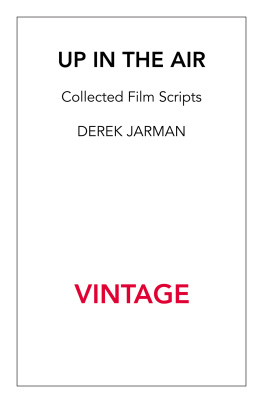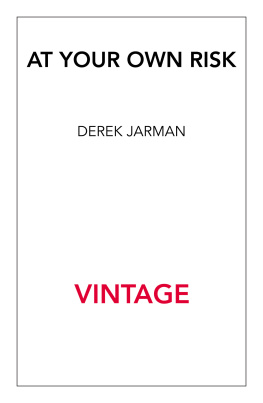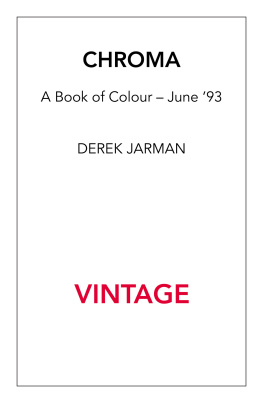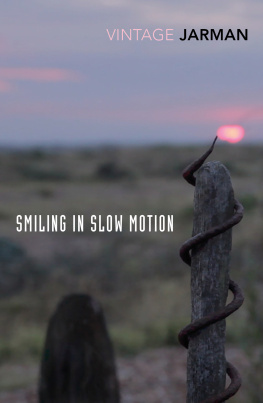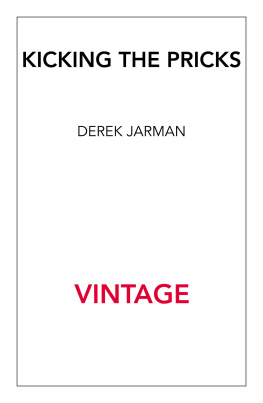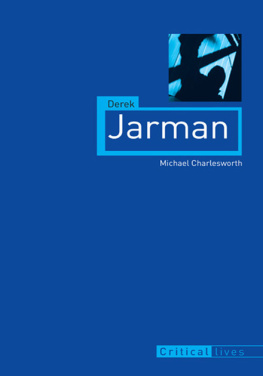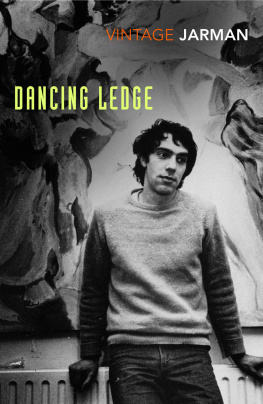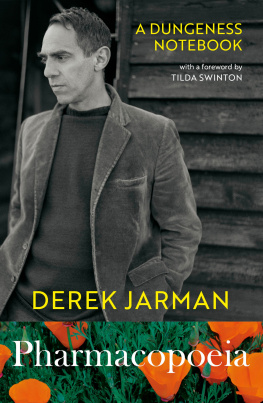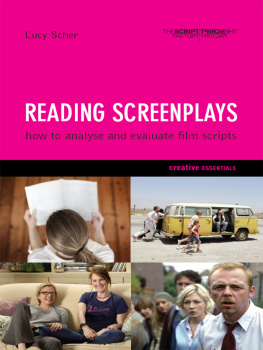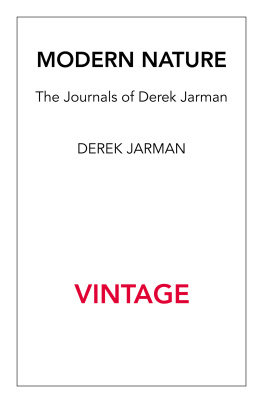Derek Jarman
U P I N T HE A IR
Collected Film Scripts
WITH AN INTRODUCTION BY MICHAEL OPRAY

This ebook is copyright material and must not be copied, reproduced, transferred, distributed, leased, licensed or publicly performed or used in any way except as specifically permitted in writing by the publishers, as allowed under the terms and conditions under which it was purchased or as strictly permitted by applicable copyright law. Any unauthorized distribution or use of this text may be a direct infringement of the authors and publishers rights and those responsible may be liable in law accordingly.
Epub ISBN: 9781473559059
Version 1.0
1 3 5 7 9 10 8 6 4 2
VINTAGE
20 Vauxhall Bridge Road,
London SW1V 2SA
Vintage is part of the Penguin Random House group of companies whose addresses can be found at global.penguinrandomhouse.com.
Akenaten copyright Derek Jarman 1976
Jubilee copyright Derek Jarman 1977
Bob-Up-A-Down copyright Derek Jarman and Tim Sullivan 1981
B Movie: Little England/A Time of Hope copyright Derek Jarman and Julian Sands 1981
Neutron copyright Derek Jarman and Lee Drysdale 1983
Sod Em copyright Derek Jarman and Keith Collins 1986
Introduction copyright Michael OPray 1996
Illustrations for Akenaten, Bob-Up-A-Down and Neutron copyright Christopher Hobbs
Illustration for Jubilee copyright Derek Jarman
First published in Great Britain by Vintage, 1996
penguin.co.uk/vintage
A CIP catalogue record for this book is available from the British Library
ABOUT THE AUTHOR
Derek Jarman painter, theatre designer and filmmaker held his first one man show at the Lisson Gallery in 1969. He designed sets and costumes for the theatre (Jazz Calendar with Frederick Ashton and Don Giovanni at the Coliseum). He was production designer for Ken Russells films The Devils and Savage Messiah, during which time he worked on his own films in Super 8 before making his features: Sebastiane (1975), Jubilee (1977) and The Tempest (1979). From 1980 he returned to painting (a show at the ICA) and design (The Rakes Progress with Ken Russell in Florence), and made the films Caravaggio (1986), The Last of England (1987), War Requiem (1988), The Garden (1990), Edward II (1991), Wittgenstein (1992) and Blue (1993). His books include: Dancing Ledge (1984), The Last of England (1987; now republished by Vintage under the title the author intended for it, Kicking the Pricks), Modern Nature (1991), At Your Own Risk (1992) and Chroma (1994). Derek Jarman died in February 1994.
ALSO BY DEREK JARMAN
Dancing Ledge
Caravaggio
Kicking The Pricks
(= The Last Of England)
War Requiem
Modern Nature
Queer Edward II
At Your Own Risk
Wittgenstein
Chroma
Derek Jarmans Garden
Up In The Air
CONTENTS
I NTRODUCTION
Michael OPray
Up in the Air contains the major unrealised film scripts Derek Jarman wrote between 1976 and 1987, and also the script of Jubilee, which was made in 1978 but, unlike his other dialogue films, has never before been published. The failure of these brilliant scripts to reach the screen was due not only to Jarmans reputation for making provocative films but also to the economic plight the British film industry found itself in after the late 1960s.
It is true to say that, for Jarman, scripts were never simply means to ends. They were always intensely personal writings that expressed strong beliefs and emotions. When they failed to materialise as films, they were not shelved and forgotten. They remained as projections of his inner world. They always seemed to have a life for him, to be part of himself, and I suspect it was painful for him to leave them behind. For this reason I believe, Jarman wanted them to be published. He saw it as one of his final acts. He was also a great pillager of his own work, so that images, scenes and moods found in these scripts were incorporated into his realised films. One of the fascinations of this volume is seeing this process at work.
From 1970 until his death in 1994, Jarman made scores of films. This enormous output can be divided very roughly into three broad categories. In the first are the feature films upon which his reputation rests Sebastiane (1976); Jubilee (1978); The Tempest (1979); Caravaggio (1986); The Last of England (1987); War Requiem (1989); The Garden (1990); Edward II (1991); Wittgenstein (1992) and Blue (1993). The second includes films which were more anti-narrative in form and often not full-feature length In the Shadow of the Sun (197480); Imagining October (1984) and The Angelic Conversation (1985). The third comprises the many short Super 8 films which include The Art of Mirrors (1973), Geralds Film (1976) but also his music videos, especially those done for Marianne Faithfull, The Smiths and the Pet Shop Boys, and other films like the sequence for Don Boyds portmanteau film Aria (1987), his collaborative film The Dream Machine (with Cerith Wyn Evans, John Maybury and Michael Kostiff, 1984) and the Super 8 compilation Glitterbug (1994).
Jarmans film scripts were nearly always written with the strong literary quality we have come to know through his autobiographical writings such as Dancing Ledge and Modern Nature. He had the ability to evoke scenes through the power of language. His scene instructions are studded with ideas and references revealing how he understood a particular scenes meaning and context. In Jubilee, for instance, he titles scene 9 H.Q. Healeys Budget Strategy in Ruins, suggesting that the films depiction of social collapse had some basis in the chaos of the late 1970s when Callaghans Labour Government collapsed.
The British film industry has been in massive decline over much of the past thirty years and, like many film directors in this country, Jarman had a never-ending struggle to gain financial backing. In his case this was frequently exacerbated by the often transgressive nature of his films, which frightened off many potential Wardour Street backers. Jarmans first foray into feature film-making, with Sebastiane in 1976, happened at a time when the most talented British filmmakers like Ken Russell, John Boorman and Nicholas Roeg had already left for America in search of financing.
Against all odds, Jarman managed to raise funds from friends to make his first three feature films, which established him as a bte noir, assuming the mantle of his mentor Ken Russell. As Jarman readily admitted, he made Super 8 films and videos not only because he liked the artistic freedom they gave him, but also because he had had no choice for many years, especially between the release of

